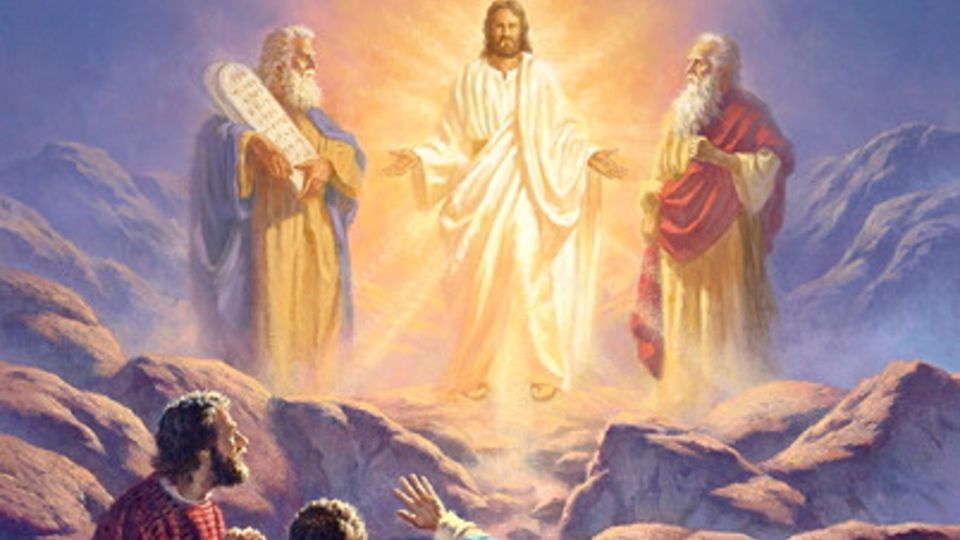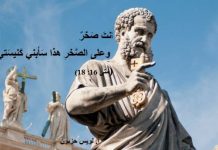The Transfiguration of the Lord Annual Remembrance Day
Saint of the day page/August 06
تذكار عيد تجلّي الرّبّ السنوية تقع في 06 آب
نقلاً عن موقع قديس اليوم
يُخبرنا الإنجيليّون الثّلاثة متّى ومرقس ولوقا عن حادثة التجلّي فيقول القدّيس متّى في الفصل السّابع عشر: “وبعد ستة أيّام مضى يسوع ببطرس ويعقوب وأخيه يوحنّا، فانفرد بهم على جبلٍ عالٍ وتجلّى بمرأًى منهم. وإذا موسى وإيليَّا قد تراءَيا لهم يُكلّمانِه. فقال بطرس ليسوع: “رَبِّ، حسنٌ أن نكون هَهُنا، فإن شئت، نصَبتُ ههنا ثلاثَ مظالّ: واحدة لك وواحدة لموسى وواحدة لإيليَّا”.
وبينما هو يتكلم ظلَّلهم غمام نيِّر، وإذا صوت من الغمام يقول: “هذا هو إبني الحبيب الذي عنه رضيت، فله اسمعوا”. فلمّا سمع التّلاميذ هذا الصّوت، اكبّوا بوجوههم، وقد استولى عليهم خوف شديد. فدنا يسوع ولمَسَهم وقال لَهم: “قوموا، لا تَخافوا”. فرَفعوا أنظارهم، فلم يروا إلَّا يسوعَ وحدَه”.
إنّ السيّد المسيح بتجلّيه هذا أراد أن يُظهِر عمّا يكون مجده في ملكوته السّماويّ لمن يكفر بنفسه ويحمل صليبه ويتبعه، فإنّه يحصل على صفات الطوباويّين الأربع أي عدم التّألم والضّياء وسرعة الإنتقال والتجرّد عن الكثافة.
والقدّيس توما اللّاهوتيّ في كلامه عن التجلّي يقول: إنّ المخلّص، بعد أن أوصى تلاميذه وجميع المؤمنين بأنَّ لا بد لكلّ مِنهُم أن يحمل كلّ يوم صليبه ويتبعه. أراد أن يُريَهم لمحة من المجد المُعَدِّ لحاملي ذلك الصّليب. وهذا ما قاله بولس الرّسول: “إنّا إن متنا معه فسنحيا معه وإن صبرنا فسنملك معه”(2تيمو 2: 11 -12).
ويعتقد القدّيس توما أنّ في حادث التجلّي هذا ظهوراً جديداً للثّالوث الأقدس: فالآب بالصّوت والإبن هو المتجلّي والرّوح القدس السّحابة المنيرة. وصوت الآب الهاتف من السّماء: “هذا هو ابني الحبيب الذي عنه رضيت، فله اسمعوا”. يعني أن تثقوا به ولا ترتابوا في ما يقوله لكم. كلّ ذلك لكي يثبتهم في الإيمان به، وإن رأوه مصلوباً وميتاً لكي يشجعهم على احتمال العذاب والموت، رجاء الحصول على المجد في السّماء الذي أظهر لهم مثاله في تجلّيه.
بركات هذا التجلّي تكون معنا. آمين!
the Transfiguration of the Lord
Saint of the day page/August 06
All three Synoptic Gospels tell the story of the Transfiguration (Matthew 17:1-8; Mark 9:2-9; Luke 9:28-36). With remarkable agreement, all three place the event shortly after Peter’s confession of faith that Jesus is the Messiah and Jesus’ first prediction of his passion and death. Peter’s eagerness to erect tents or booths on the spot suggests it occurred during the week-long Jewish Feast of Booths in the fall. According to Scripture scholars, in spite of the texts’ agreement it is difficult to reconstruct the disciples’ experience, because the Gospels draw heavily on Old Testament descriptions of the Sinai encounter with God, and prophetic visions of the Son of Man. Certainly Peter, James, and John had a glimpse of Jesus’ divinity strong enough to strike fear into their hearts. Such an experience defies description, so they drew on familiar religious language to describe it. And certainly Jesus warned them that his glory and his suffering were to be inextricably connected—a theme John highlights throughout his Gospel.
Tradition names Mount Tabor as the site of the revelation. A church first raised there in the fourth century was dedicated on August 6. A feast in honor of the Transfiguration was celebrated in the Eastern Church from about that time. Western observance began in some localities about the eighth century.
On July 22, 1456, Crusaders defeated the Turks at Belgrade. News of the victory reached Rome on August 6, and Pope Callistus III placed the feast on the Roman calendar the following year.




















